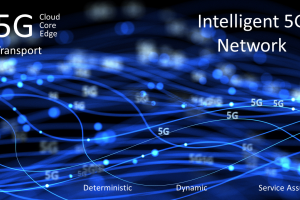Nobody could accuse the telecoms industry of standing still – after all, research into 6G technology is underway even though 5G has barely left the labs to go into its deployment phase. But, as Sanjay Bhatia, VP of solutions marketing & strategy at Ribbon asks, is all the network research and investment currently focused on the right issues?
While, over the years, the capacity of our fixed network connections has certainly developed as quickly as our mobile networks, this has not been fully matched in terms of transport network capability. A typical connection at the dawn of the internet era in the mid-’90s would have been a 4k dial-up modem. As we have transitioned through basic broadband and xDSL connections, we have now reached a world where 1GB fibre to the premises (FTTP) connections are becoming commonplace.
However, consider this: Most 5G networks that have been deployed are of the non-stand-alone variant – where the 5G radio path makes use of the existing mobile network infrastructure. But today’s 4G/LTE transport networks were not designed to support 5G. That means these networks can’t provide all the services that 5G can deliver. Furthermore, this failing is not just a 5G phenomenon – many of the issues raised by these generational revolutions in network technology extend well beyond 5G and the mobile world.
Infrastructure not up to the task
In fact, much of the existing transport infrastructure is not up to the task of efficiently providing all the complex services and applications that could exist today – let alone support the advanced connections of tomorrow.
Rolling out new business or consumer services in telecommunications, isn’t quite the same as replacing an old-fashioned light bulb, with an energy saving one, and then replacing it again with an LED bulb. Those new bulbs all operate perfectly on the same electrical network. Today, as the network operators look to deploy new services, they find themselves relying on outdated network technology to deliver them.
Hungry for data and speed

Meanwhile, business and consumer customers are increasingly hungry for more – for more data, more speed, and more of just about everything else. It is a common mistake to confuse that desire for more with the availability of bandwidth – a.k.a. we need more than just a bigger, faster pipe.
The ‘lightbulb moment’ for the telecommunications industry is the realisation that operators trying to meet that customer demand, face just as much a problem with network capability as they do with network capacity. Legacy transport networks simply do not have the right mix of tools, processes or flexibility to deliver and support advanced services or modern business models. The transport networks take a static approach to carrying traffic and therefore lack the dynamism required to enable features such as traffic prioritisation, service assurance, or differential pricing to be accurately configured, measured and guaranteed.
With the investment focus weighted towards ‘connectivity’, we see that clearly with the deployment of, a high capacity, high speed, 5G radio path capable of enabling a whole range of advanced services that the underlying infrastructure cannot support.
The critical infrastructures underpinning all operator services are transport networks – and they need modernising. This requires investment in areas such as improved network management systems, network optimisation, in timing/synchronisation, automation and last, but not least, service assurance. It involves taking a holistic view of the entire transport infrastructure and investing in those underinvested core elements that will underpin the new services.
Transport and healthcare
For many of those envisioned new services – including autonomous cars or remote surgery – it will not be enough for an operator to set a service level agreement and hit it 99% of the time. A guaranteed service level for an autonomous car has to be just that – guaranteed in every respect: Availability, bandwidth, jitter, latency and any other measurement. Imposing a financial penalty for being 1% out will not meet the requirements.

This is the heart of the matter. A superfast network, with smart edge devices needs an intelligent core. We need to lose that distinction or separation between edge and core and create one, equally intelligent network.
Without that, much of the service innovation of which the industry is rightly proud will remain out of reach. As will the return on the investment already made. Investment in connection capacity without an accompanying investment in network capability leaves an industry, and its customers, still groping for the light switch.
The author is Sanjay Bhatia, vice president of solutions marketing & strategy, Ribbon.
Comment on this article below or via Twitter: @VanillaPlus OR @jcvplus






